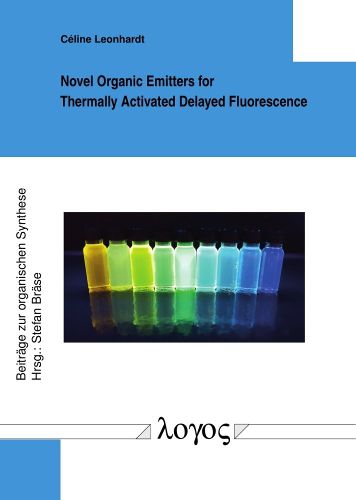Readings Newsletter
Become a Readings Member to make your shopping experience even easier.
Sign in or sign up for free!
You’re not far away from qualifying for FREE standard shipping within Australia
You’ve qualified for FREE standard shipping within Australia
The cart is loading…






Organic molecules capable of thermally activated delayed fluorescence (TADF) have drawn great interest in the field of optoelectronic devices. Especially organic light emitting diodes (OLEDs) profit from unique properties such as a 100% theoretical internal quantum efficiency and the utilization of purely organic molecules.
Two directions have been taken to design and synthesis blue organic TADF emitters. First, two new acceptor cores based on the triazolotriazine scaffold, namely mono- and di[1,2,4]-triazolo[1,3,5]-triazine, were developed. Acridine donors with different donor strengths were applied to the new acceptors to achieve best photophysical results. Second, a literature known TADF emitter (5TCzBN) was adjusted to find an underlying understanding of the TADF phenomenon. The nitrile acceptor was transformed into tetrazole and oxadiazole TADF acceptors. Electronic effects have been investigated with photophysical methods through the derivatization with different functional groups.
$9.00 standard shipping within Australia
FREE standard shipping within Australia for orders over $100.00
Express & International shipping calculated at checkout
Organic molecules capable of thermally activated delayed fluorescence (TADF) have drawn great interest in the field of optoelectronic devices. Especially organic light emitting diodes (OLEDs) profit from unique properties such as a 100% theoretical internal quantum efficiency and the utilization of purely organic molecules.
Two directions have been taken to design and synthesis blue organic TADF emitters. First, two new acceptor cores based on the triazolotriazine scaffold, namely mono- and di[1,2,4]-triazolo[1,3,5]-triazine, were developed. Acridine donors with different donor strengths were applied to the new acceptors to achieve best photophysical results. Second, a literature known TADF emitter (5TCzBN) was adjusted to find an underlying understanding of the TADF phenomenon. The nitrile acceptor was transformed into tetrazole and oxadiazole TADF acceptors. Electronic effects have been investigated with photophysical methods through the derivatization with different functional groups.